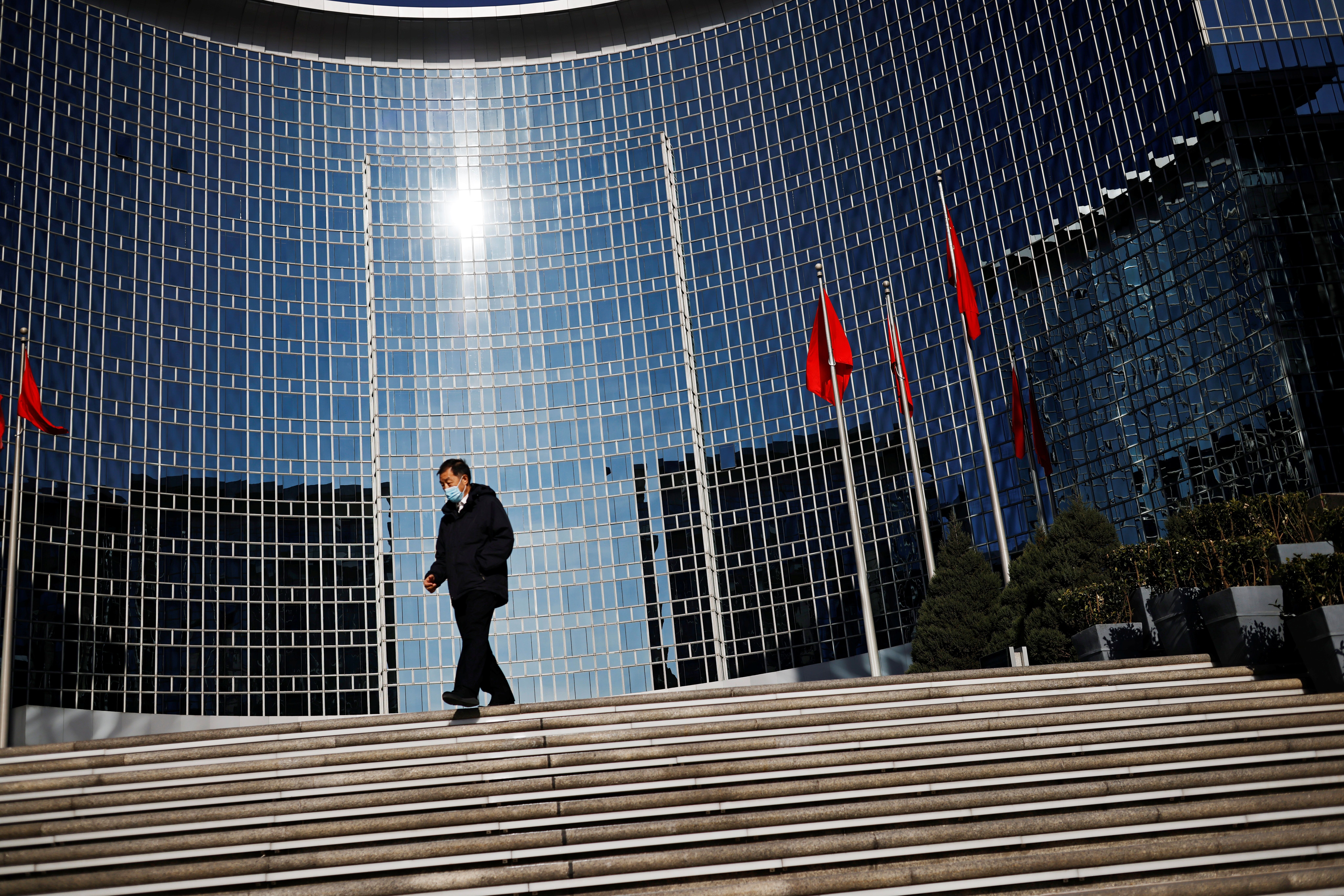China’s Preparations for the Second Wave of COVID-19

The COVID-19 situation in China is now better than in Europe or the U.S. Official Chinese figures indicate that in October and November there were no more than 50 cases of infection per day across the country. Most of the restrictions introduced during the first wave of the pandemic were lifted. This allowed, for example, more than 630 million Chinese to travel around the country during the October holiday commemorating the 71st anniversary of the founding of the PRC. However, outbreaks of infections appear regularly. In October, several people tested positive for the virus in the city of Qingdao and Yunnan Province, and in November, several dozen (some Chinese sources indicate several hundred) cases were discovered in Xinjiang Province. The authorities in those areas are introducing measures to prevent an increase in infections.
Counteracting the Second Wave
In June, Chairman Xi Jinping indicated the main goals in combating COVID-19 was preventing infection, improving the effectiveness of crisis management, and international cooperation. A planned amendment to the Emergency Response Law of 2007 should improve state-level efficiency, for example, by providing a legal framework for introducing restrictions in socio-economic life (e.g., lockdowns) or improving the flow of information after detecting an outbreak of an infectious disease. Authorities (both central and regional) are exercising extensive powers in managing new infections. Low-level employees from outside state institutions are assigned to work in quarantine centres. Meanwhile, mid-level officials are dismissed when new infections are discovered in their area, such as the head of the Qingdao city health committee, who lost his position.
The Chinese authorities are trying to reduce the number of infections by using public surveillance mechanisms. Through mobile phones or other monitoring, they collect data of infected people and track their social contacts. Mandatory mobile applications (different in individual provinces), citizens present a “certificate” in the form of a QR code that shows anyone checking that they have not been in contact with an infected person, which makes it possible to travel by train, for example. Mass testing of potential SARS-CoV-2 carriers and isolating COVID-19 patients is also aimed at preventing the growth of infections. In Qingdao, more than 10 million inhabitants were tested within five days after single cases were detected. The Chinese authorities also examine foreign food and quarantine it (for a month at most) if the virus is detected on the surface of the products (e.g., recently with German pork).
Visits of foreigners to China are also limited. In November, the authorities banned the entry of people from, among others, Belgium, France, Russia, and Italy. People from other countries (including Poland) require proof of two negative coronavirus tests to enter. Special procedures have also been introduced for foreigners, such as repeated temperature checks on planes, and upon arrival they are put in a two-week, paid ($50 a day) quarantine.
In the long term, vaccine development is a high priority in containing the pandemic. The work of Chinese scientists is supported by the state’s special services, which have been accused of cyberattacks and theft of medical data from research centres in Japan and the U.S. Four Chinese vaccines are in the final phase of clinical trials, and more than 60,000 people have already been vaccinated. Zhong Nanshan, head of the COVID-19 expert panel of the Chinese state health committee, said all of these vaccines had an efficacy rate similar to that of the best Western counterparts (though he did not provide any details). China has announced that by the end of this year it will be able to produce more than 600 million doses, and in 2021 more than 1 billion.
Impact of the Pandemic on Chinese Foreign Policy
The relatively good infection statistics in China are presented as evidence that it is handling the crisis better than the EU or the U.S. The quick release of a vaccine by China is used as further proof of its advantage and is an incentive for other countries to cooperate with it—Hungary announced that it is interested in purchasing more than 1 million doses. The Chinese vaccines are being tested not only in China but also, for example, in the UAE, Jordan, and Brazil. However, the results have varied; for example, on 9 November, the Brazilian drug certification agency suspended the tests after the death of one participant (two days later it allowed the tests to resume, determining the death was not related to the vaccination). A licensed Chinese vaccine factory is also to be built in the Brazilian state of Sao Paulo. This has become part of a dispute between likely rivals in the 2022 presidential election, namely João Doria, governor of Sao Paulo state, and the current head of state, Jair Bolsonaro, who is opposed to cooperation with China.
China has also joined the COVAX initiative to ensure broad access to a COVID-19 vaccine. The programme is implemented, among others, by WHO, in which China emphasises its success in fighting the pandemic. China, though, has been delaying the organisation’s investigation into why the first cases of virus infection were concealed. China is also blocking Taiwan’s participation in WHO meetings, probably to distract from the fact that the island has dealt with COVID-19 better than the mainland.
A tool used by China to strengthen relations with its partners during the pandemic is what it calls the Health Silk Road (HSR). Through it, China offers cooperation in the field of crisis-management systems, including the sale of hospital equipment and data-collection systems. Serbia and Russia appear to be interested in the initiative. Moreover, during the G20 summit in November, China proposed a global system of QR codes based on the Chinese practice, presumably with the goal of making traveling easier. Human rights organisations, however, point out the possible privacy and security risks associated with apps collecting large amounts of data, including medical information.
Conclusions and Perspectives
The infection and other data released by Chinese authorities should be treated with caution as often the careers of local officials depend on them. Nevertheless, the downward trend in cases seems to be real. China’s success so far is due to the use of the mechanisms of a totalitarian state, on a scale difficult to implement in a democratic state. Chinese citizens abide by the restrictions knowing that otherwise the government may, for example, prevent them from having normal work. However, the effect of the Chinese returning to pre-pandemic behaviour may be a gradual increase in infections, for example, related to traveling around the country. The high probability of a second wave is confirmed by analyses by the authorities and Chinese scientists.
The fear of an increase in infections and the economic problems related to the pandemic motivate China to increase its economic self-sufficiency, including in the modern technology sector. This was the subject of discussions at the 5 October plenum of the CCP Central Committee. China will focus its international activity on the circle of its closest partners, promising access to a vaccine or cooperation within HSR, for example. This group will comprise elements of a supportive but dependent corps of countries, whether financially or in the field of health protection. The success of this policy depends to a large extent on U.S. actions, for example, in security and trade, which during the presidency of Donald Trump prompted some countries to cooperate more closely with China.
Therefore, cooperation with China in the context of a second wave of the pandemic is problematic for the EU. Its institutions and most of its Member States have reservations about the effectiveness of Chinese vaccines and the quality of medical equipment. However, the EU welcomed China’s participation in COVAX, where it can cooperate, for example, on the supply of vaccines to developing countries, which may accelerate the end of the pandemic. EU countries should be aware that their possible participation in Chinese initiatives, such as HSR or the purchase of Chinese vaccines, will be used by China for propaganda purposes as evidence of the ineffectiveness of Western governments, including the EU. The activity in WHO should also be analysed in the context of its political use by China. Poland’s negative experiences related to the supply of medical equipment from China that did not meet international standards and the decisive position of the U.S. also do not favour its greater involvement in cooperation with China.


